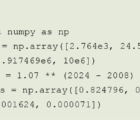This issue offers a nice mix of the historical and futuristic, from the nascent days of automobile liability insurance to the nurturance of singular type of employee, the smart creative.
Our cover story, “An Accident in the Country,” tells of an incident nearly 100 years ago in the Catskills of New York that forever changed the lives of a family. Author Liz Haigney Lynch relates the story of her relative, Kunigunde Scholing, who was one of the first automobile fatalities in the United States. Sobering as well as personable, the article harkens back to a “Wild West” for automobiles — a time before uniform traffic safety rules and liability coverage were mandatory. The article also reminds us that we are not just in the “numbers business”; we are in the people business as well.
Continuing in a historical vein, our Explorations column looks at a little-known IBNR method developed by the late F.E. de Vylder, a professor and researcher whom guest columnists Eric Blanke and Jeremy Smith deem an actuarial forefather. “Exploring Vintage Actuarial Methods” invites us to think about some of the historical underpinnings of our modern methods.
Speaking of the recent past, Jim Lynch reports on three sessions of the recent CAS Ratemaking and Product Management Seminar, which was held March 9-11 in Addison, Texas. His recaps help those of us who did not attend be more in tune with current events and trends in the industry — and might help some of you who did attend better remember what you heard.
Looking to the future, Robert Walling III’s opinion piece, “The Battle for Smart Creatives,” is an excellent description of how Google fosters innovation and creativity in its employees. The article also hints at what may be our toughest competition as actuaries. I hope all CAS members, especially those involved with admissions and exams, will read this piece and take it to heart.
Finally, the column “25 Years Ago in the AR,” which was the brainchild of then AR Editor in Chief Walter Wright, offers a view of our association’s past and timeless sentiments. In this issue’s column, the late Matt Rodermund’s comments are as noteworthy today as they were a quarter of a century ago. It’s a must read.











